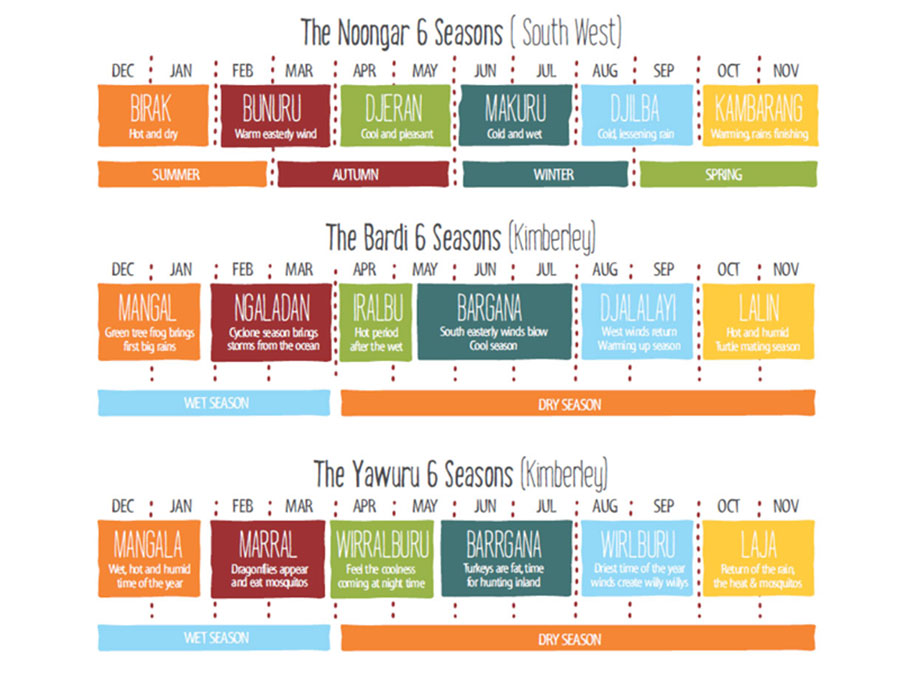
The hottest time of year has arrived, the Noongar season Bunuru, the season of adolescence, typically falls over February to March. It is characterised by hot dry weather, with little to no rain, and a cool wind in the afternoons.

Bunuru is also the time of white flowers, with stunning flowering gums including Jarrah, Marri and Tuart. Where you find Marri you will also find many nectar feeding birds, insects and mammals.
You will also see huge cones emerging from the centre of the stunning female djiriji (zamia palm), which contains a cotton like substance called kundyl, which would be used by the Noongar people as fire tinder or as an absorbent fibre for hygienic purposes.. As the dry weather continues the bayu (seeds) on the cones will transform from green
This hot stint will only last until Djeran arrives, bringing in the cooler (April) weather.
The Aboriginal six-season calendar varies for different groups throughout the state and across Australia. It acts as an extremely important guide, outlining what nature is doing at every stage of the year, and how to live safely, sustainably, and respectfully in relation to the land, plant and animal cycles and the preservation of environmental ecosystems.
